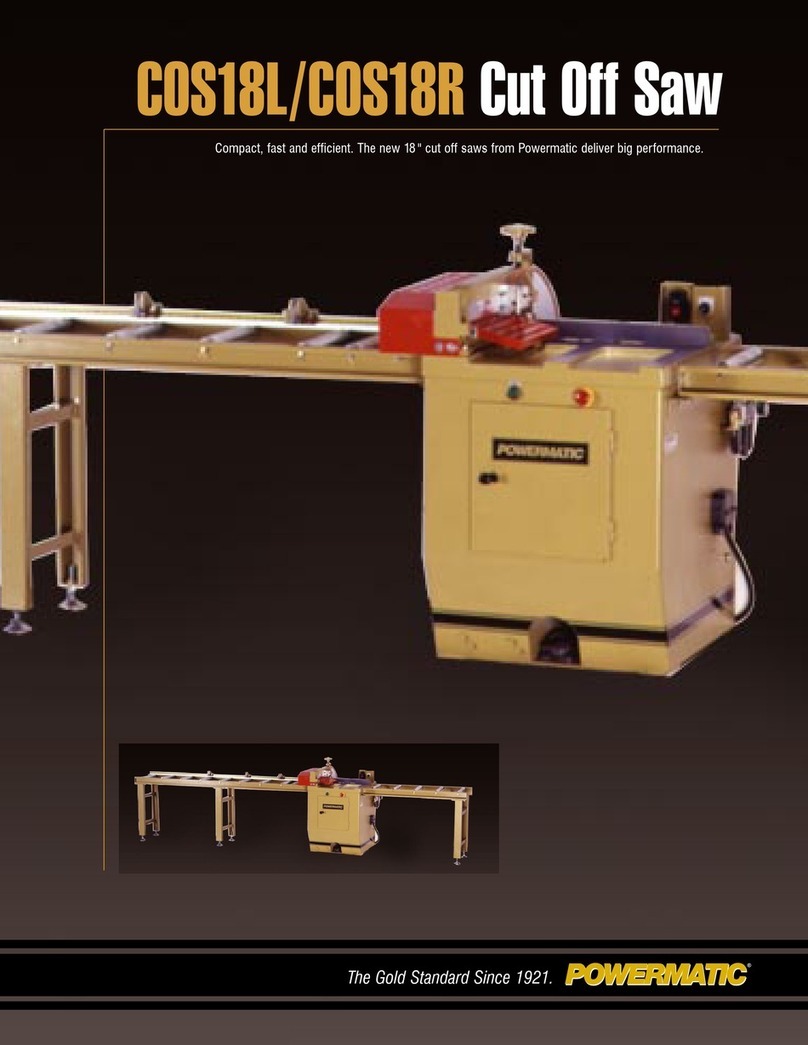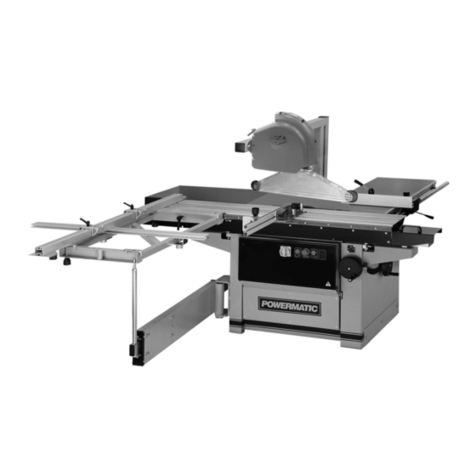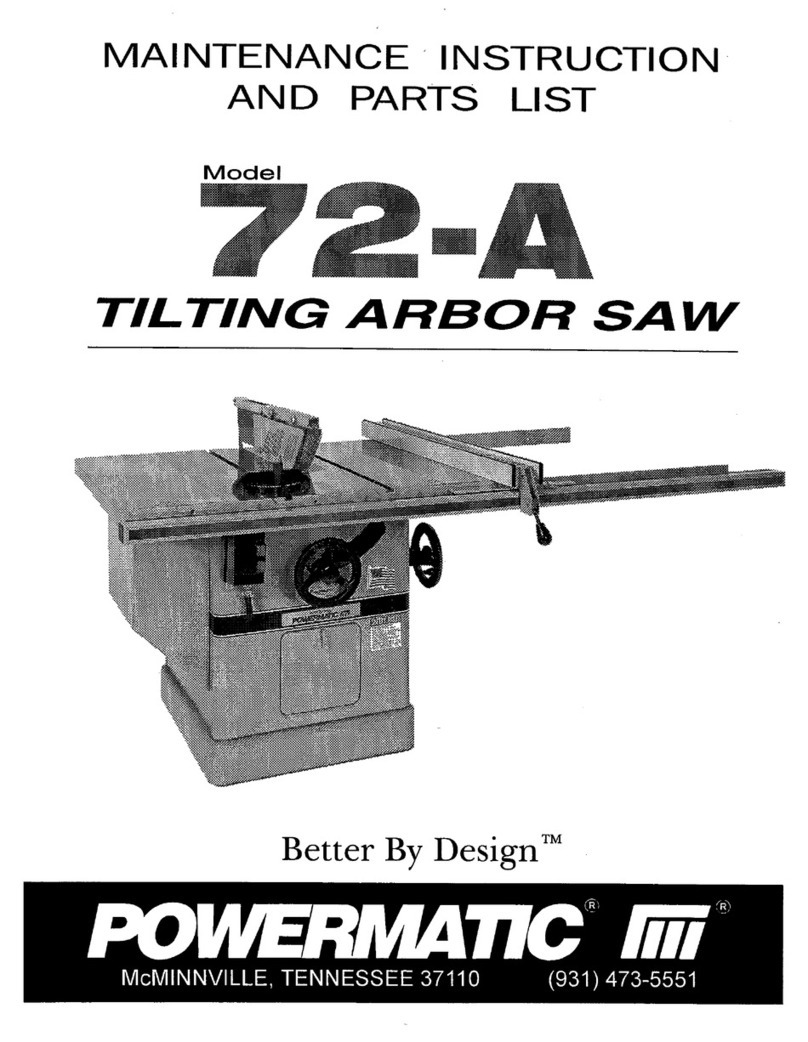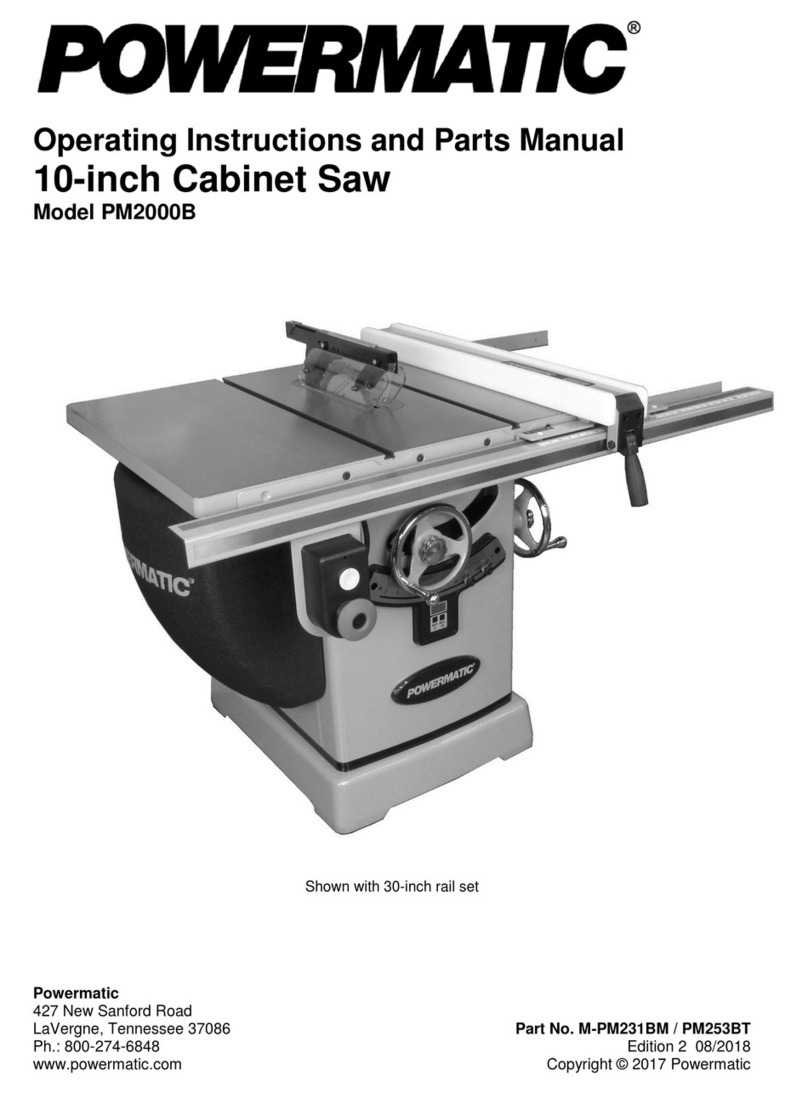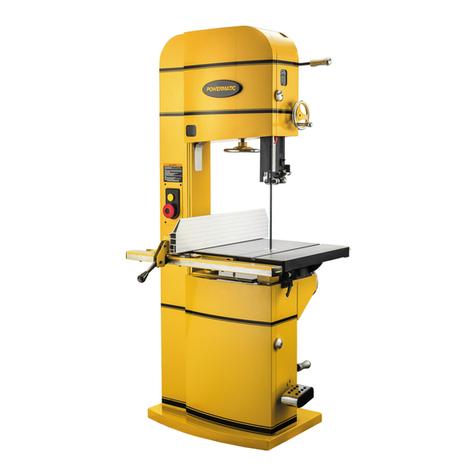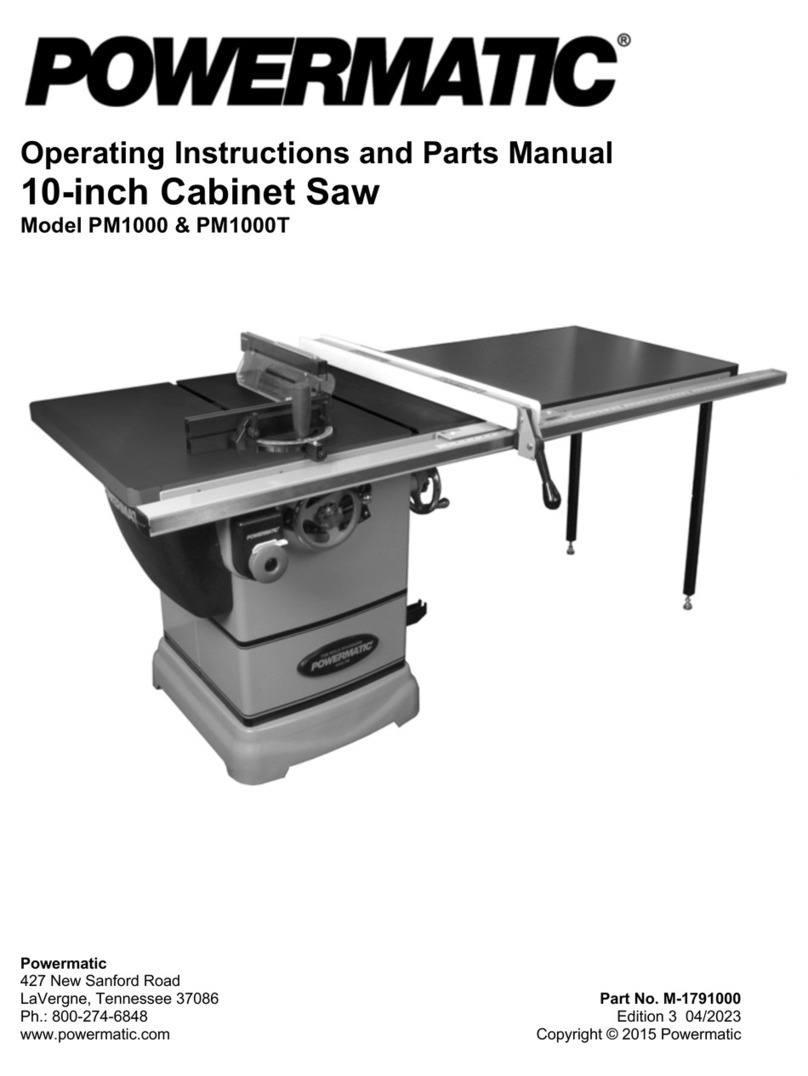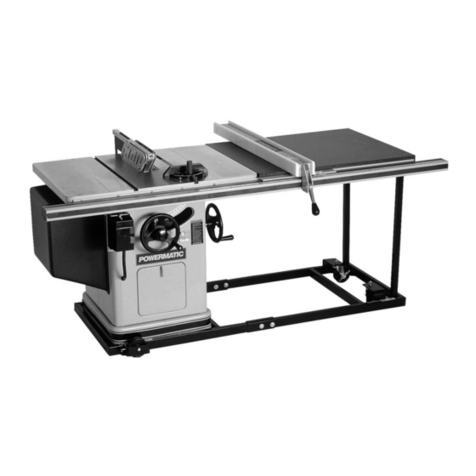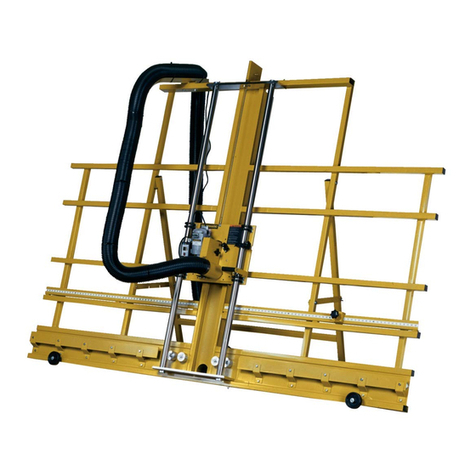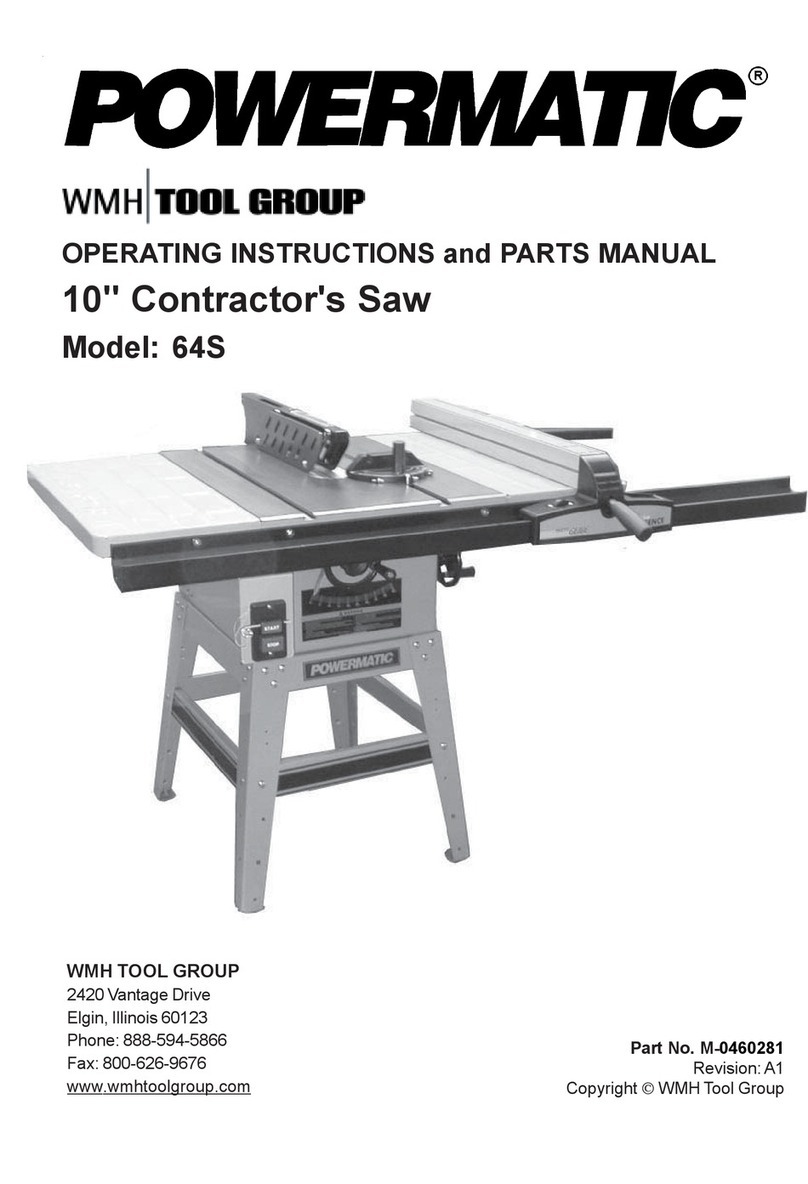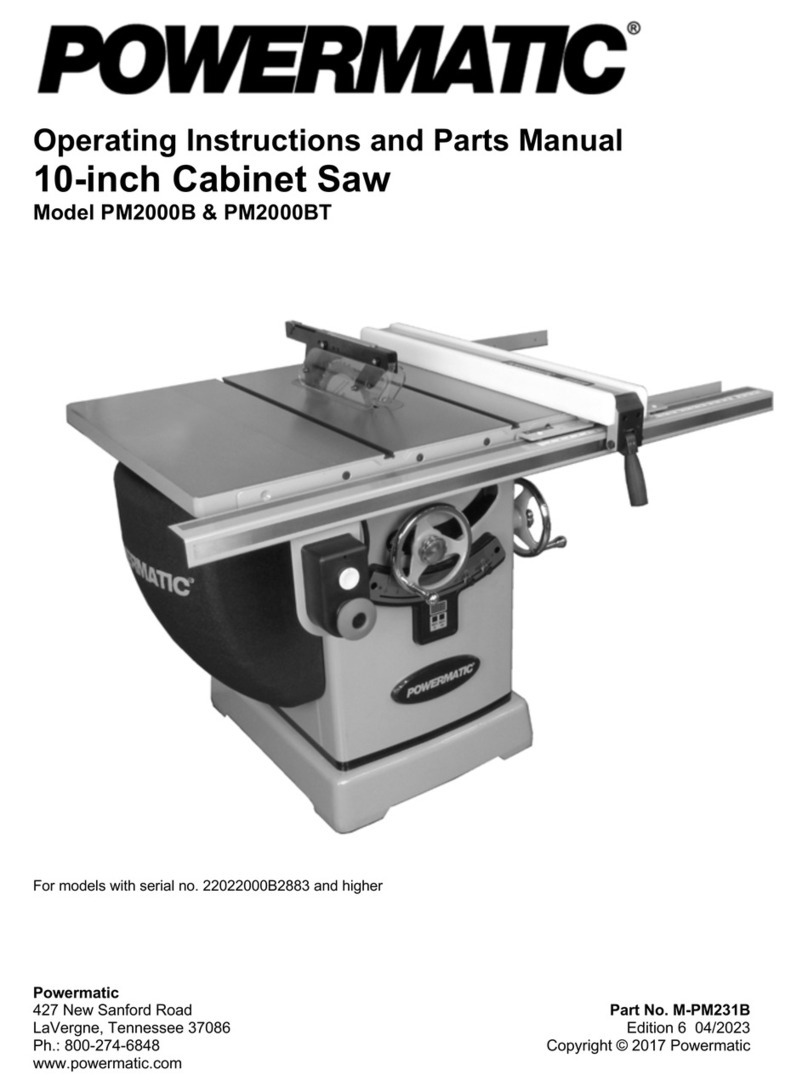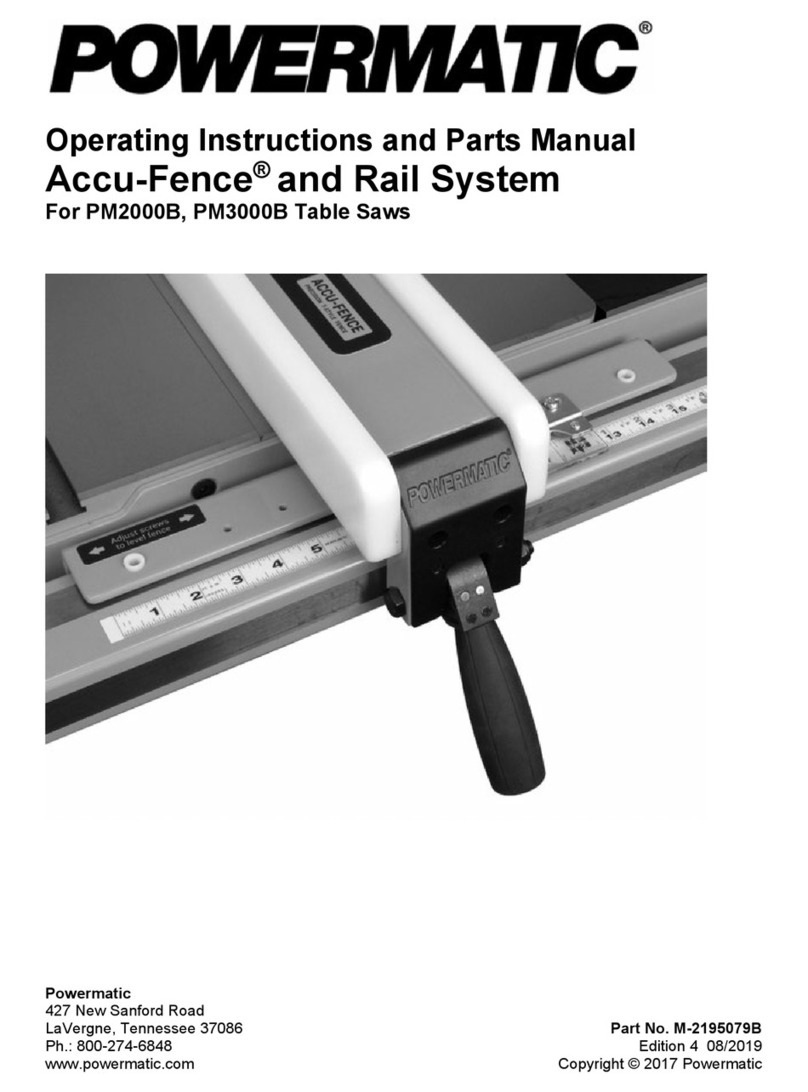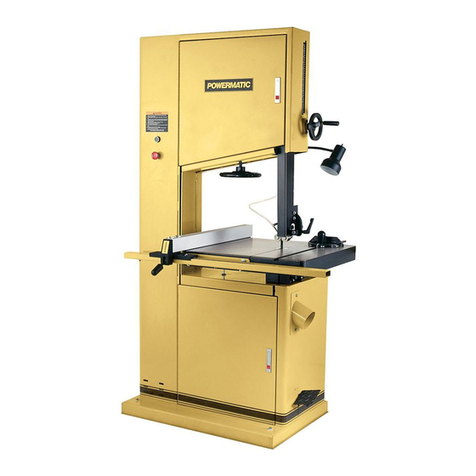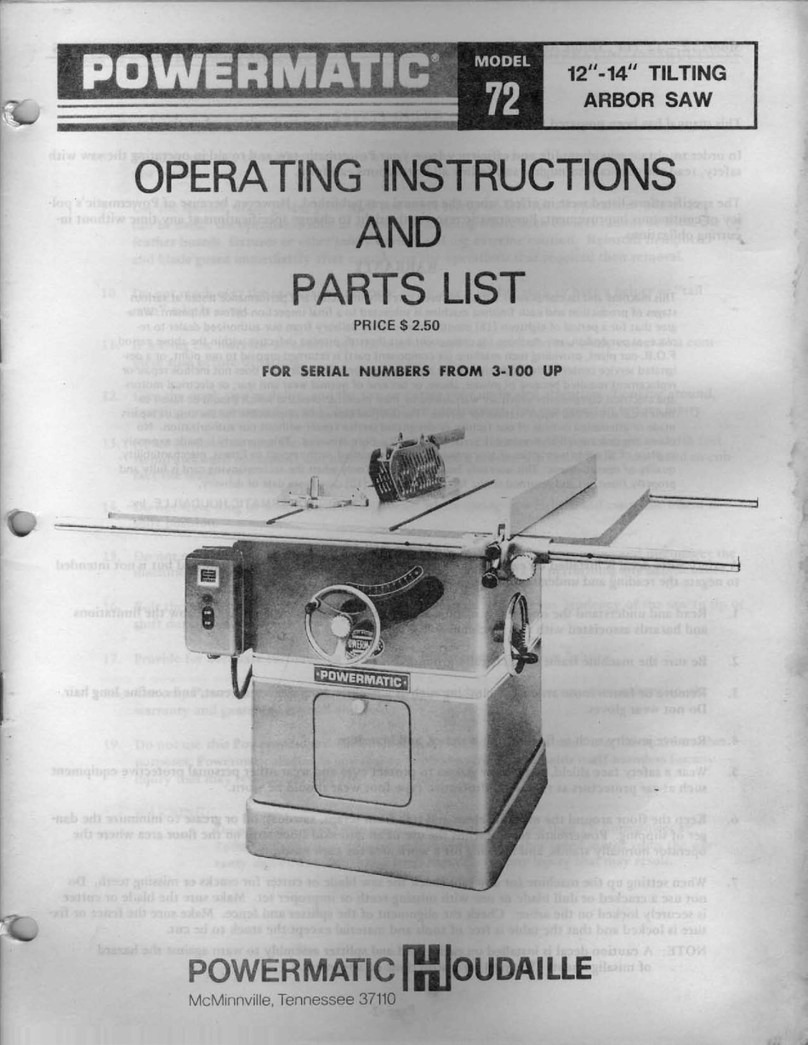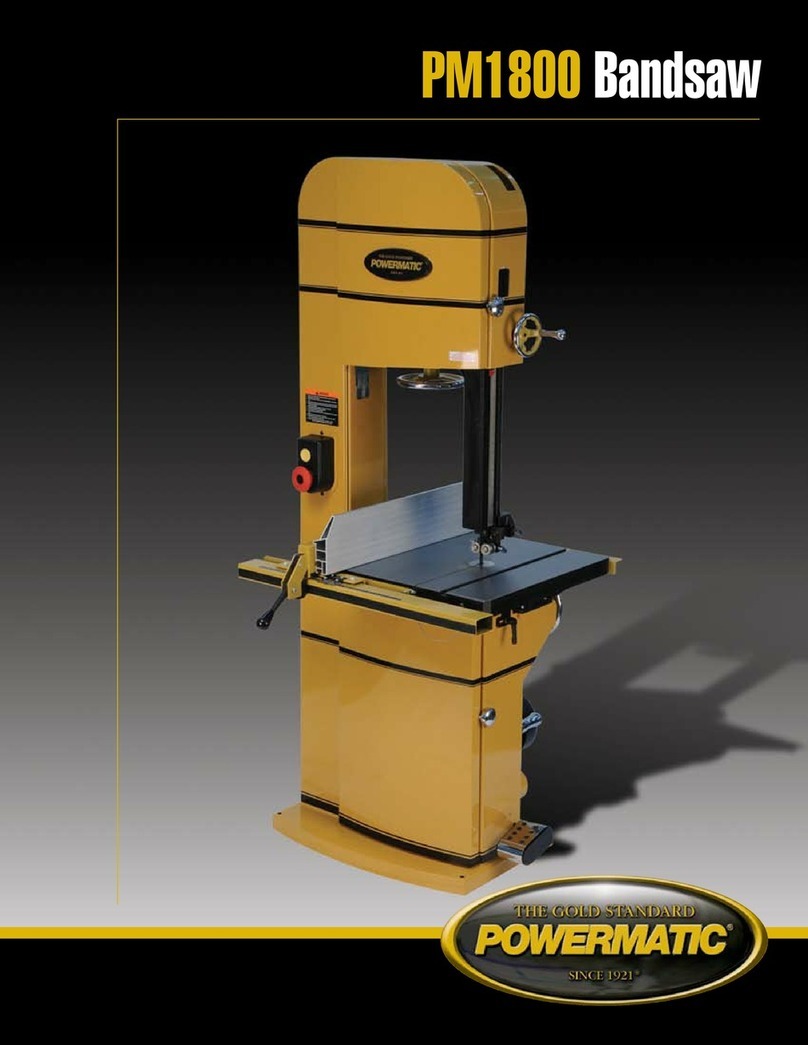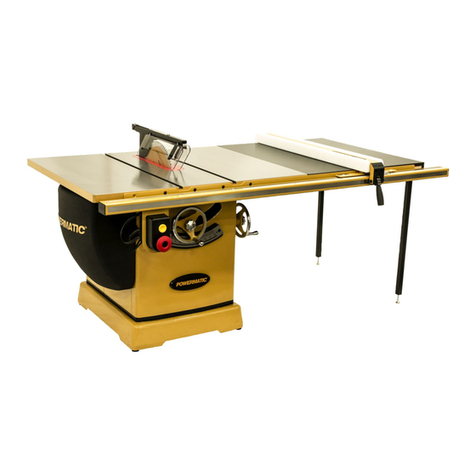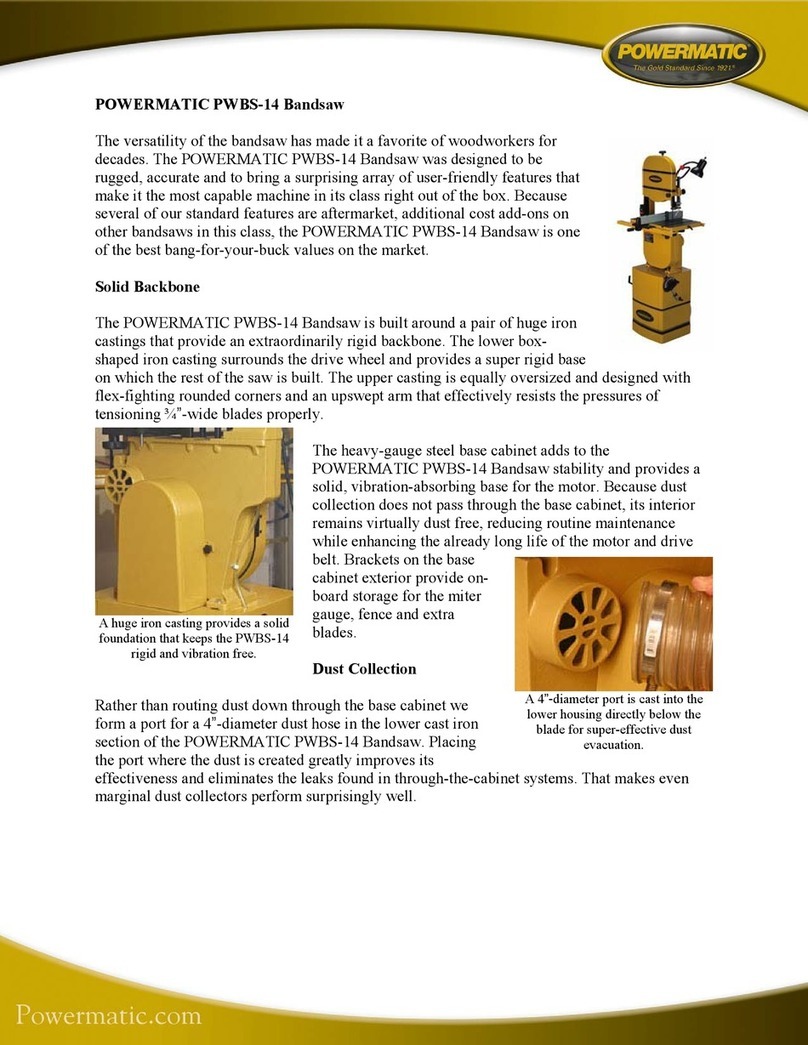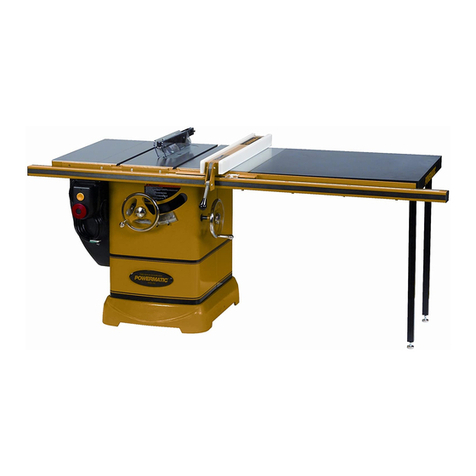
Warranty & Service
TheWMH ToolGroup warrantsevery productit sells. Ifone ofour toolsneeds serviceor repair, oneof our
AuthorizedRepairStations locatedthroughout theUnited States cangive youquick service.
In most cases, any one of these WMH Tool Group Repair Stations can authorize warranty repair, assist you in
obtainingparts,or performroutine maintenanceand majorrepaironyour JET, Powermatic,Performax,or
Wilton tools.
Forthe nameof anAuthorizedRepair Stationin yourarea, pleasecall1-800-274-6848.
More Information
Remember, the WMH Tool Group is consistently adding new products to the line. For complete, up-to-date
productinformation, checkwith yourlocal WMHTool Groupdistributor.
WMH Tool Group Warranty
The WMH Tool Group makes every effort to assure that its products meet high quality and durability standards
andwarrants tothe originalretail consumer/purchaserof ourproducts thateach productbe freefrom defectsin
materialsand workmanshipas follow: 1YEARLIMITED WARRANTYONALLPRODUCTS UNLESSSPECI-
FIED OTHERWISE. This Warranty does not apply to defects due directly or indirectly to misuse, abuse,
negligenceor accidents,normal wear-and-tear, repair oralterations outsideour facilities,or toa lackof mainte-
nance.
THEWMH TOOLGROUPLIMITSALLIMPLIEDWARRANTIESTOTHEPERIOD SPECIFIEDABOVE,FROM
THEDATETHEPRODUCT WASPURCHASEDATRETAIL.EXCEPTASSTATEDHEREIN,ANYIMPLIED
WARRANTIESORMERCHANTIBILITYANDFITNESSAREEXCLUDED.SOMESTATESDONOT
ALLOWLIMITATIONS ONHOWLONGTHE IMPLIEDWARRANTYLASTS,SOTHEABOVELIMITATIONMAY
NOTAPPLYTOYOU.THE WMHTOOLGROUP SHALLINNO EVENTBELIABLE FORDEATH,INJURIES
TOPERSONS ORPROPERTY, ORFORINCIDENTAL, CONTINGENT,SPECIAL, ORCONSEQUENTIAL
DAMAGESARISING FROMTHEUSEOFOURPRODUCTS. SOMESTATESDO NOTALLOWTHEEXCLU-
SIONORLIMITATIONOFINCIDENTALORCONSEQUENTIALDAMAGES,SOTHEABOVELIMITATIONOR
EXCLUSIONMAYNOTAPPLYTOYOU.
To take advantage of this warranty, the productor part mustbe returned forexamination, postage prepaid, to an
AuthorizedRepairStation designatedby ouroffice. Proofof purchasedate andan explanationof thecomplaint
must accompany the merchandise. If our inspection discloses a defect, we will either repair or replace the
product,or refundthe purchaseprice ifwe cannotreadily andquickly providea repairor replacement,if youare
willing to accept a refund. We will return repaired product or replacement at WMH's expense, but if it is
determined there is no defect, or that the defect resulted from causes not within the scope of WMH's warranty,
then the user must bear the cost of storing and returning the product. This warranty gives you specific legal
rights; you may also have other rights which vary from state to state.
The WMH Tool Group sells through distributors only. Members of the WMH Tool Group reserve the right to
effect at any time, without prior notice, those alterations to parts, fittings, and accessory equipment which they
maydeem necessaryfor anyreasonwhatsoever.
This manual has been prepared for the owner and operators of a Powermatic Model 74ATilting
Arbor/Scoring Saw. Its purpose, aside from machine operation, is to promote safety through the
use of accepted correct operating and maintenance procedures. Completely read the safety
and maintenance instructions before operating or servicing the machine. To obtain maximum
life and efficiency from your table saw and to aid in using the machine safely, read this manual
thoroughly and follow all instructions carefully.
